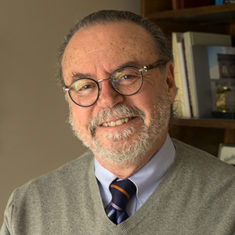When We Say Community Relations, What We Really Mean Are Community Relationships.
By Thomas J. Roach
Terms like community relations and public relations are misleading. They objectify complex, dynamic social interactions as if they were tasks on a to-do list. The people outside the organization are not one entity. They are individuals: mayors, judges, business owners, and neighbors. They can’t all be manipulated with a few broadside communication strategies employed to manufacture an image or neutralize threats.
Some quarries interact in meaningful ways with their communities. They treat people living nearby as neighbors. When possible, they work with other businesses in the community. They sponsor softball teams, they donate to charitable institutions, and their executives serve on local boards and committees.
This is not necessarily the case with all quarries. Many quarry sites have a lifespan of just 35 to 50 years, but many quarry businesses are more than 100 years old. They start outside city limits where no one is concerned about things like blasting and truck traffic.
If urban sprawl comes to surround the quarry operation, those who manage the quarry often see their new neighbors as a threat. They avoid communicating with them and literally build fences and berms and put up “Keep Out” signs. The tacit job responsibility for the community relations person is “keep them off our backs so we can get our work done.”
Untenable Approach
This approach in untenable for two reasons. First, there is no them. The individuals and community groups with whom an organization interacts are many, so having an “us vs. them” view of the outside world is impractical. Second, it is counterproductive to try to build trust in a matrix of relationships by making public statements that treat everyone like they are part of a senseless mob.
If a quarry is in an urban area, it experiences the same array of pressures and demands as a Walmart or a Starbucks. Instead of trying to fend off the outside world, the organization’s business culture must integrate itself into a network of government officials, industry leaders and private citizens.
Viewing community relations as just another business objective isn’t so much a semantics problem as it is an identity problem. Organizational leaders must answer an existential question: Do we want to look like we are contributing members of the community, or do we want to be contributing members of the community?
More and more quarries are engaging with their community partners. Here are some examples and suggestions for building public relationships.
- Form an advisory board that meets monthly or yearly and discusses quarry plans and concerns. Recruit someone from the mayor’s office, a member of the police force, a citizen who lives nearby, an hourly employee, and a couple members of management. If the quarry is near a school, put a school board member on the board. An advisory board doesn’t have authority over a company, it is an opportunity to air issues, get feedback, and learn how to avoid problems.
- Plan yearly events like quarry tours, host a picnic, invite teachers to bring their classes on field trips. Send out a list of employees with specialized expertise who are available to deliver lectures to community groups.
- Charge every employee with joining or formally interacting with at least one community group or project each year. Whenever it is feasible, form business relationships with local suppliers.
- Dress up your front office. The berms and “No Trespassing” signs are necessary for safety reasons, but the main entrance doesn’t have to look like a war zone. Do some landscaping. Fill the holes in the driveway, repair the broken windows, and freshen up the paint. Why shouldn’t the public facing part of the quarry operation look as good as the dentist’s office or the ice-cream parlor?
When we say community relations, what we really mean are community relationships. Make sure you are successfully building them.

Thomas J. Roach Ph.D., has 30 years experience in communication as a journalist, media coordinator, communication director and consultant. He has taught at Purdue University Northwest since 1987, and is the author of “An Interviewing Rhetoric.” He can be reached at [email protected].
